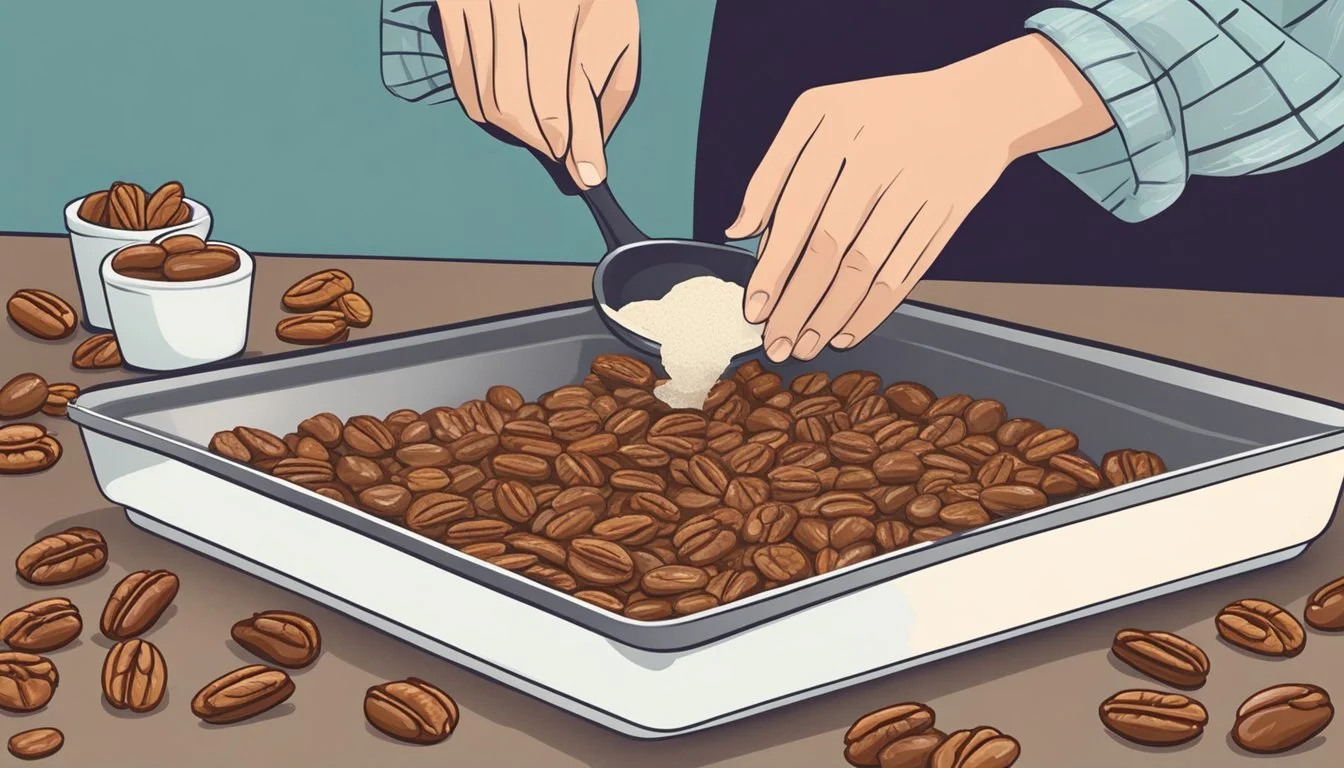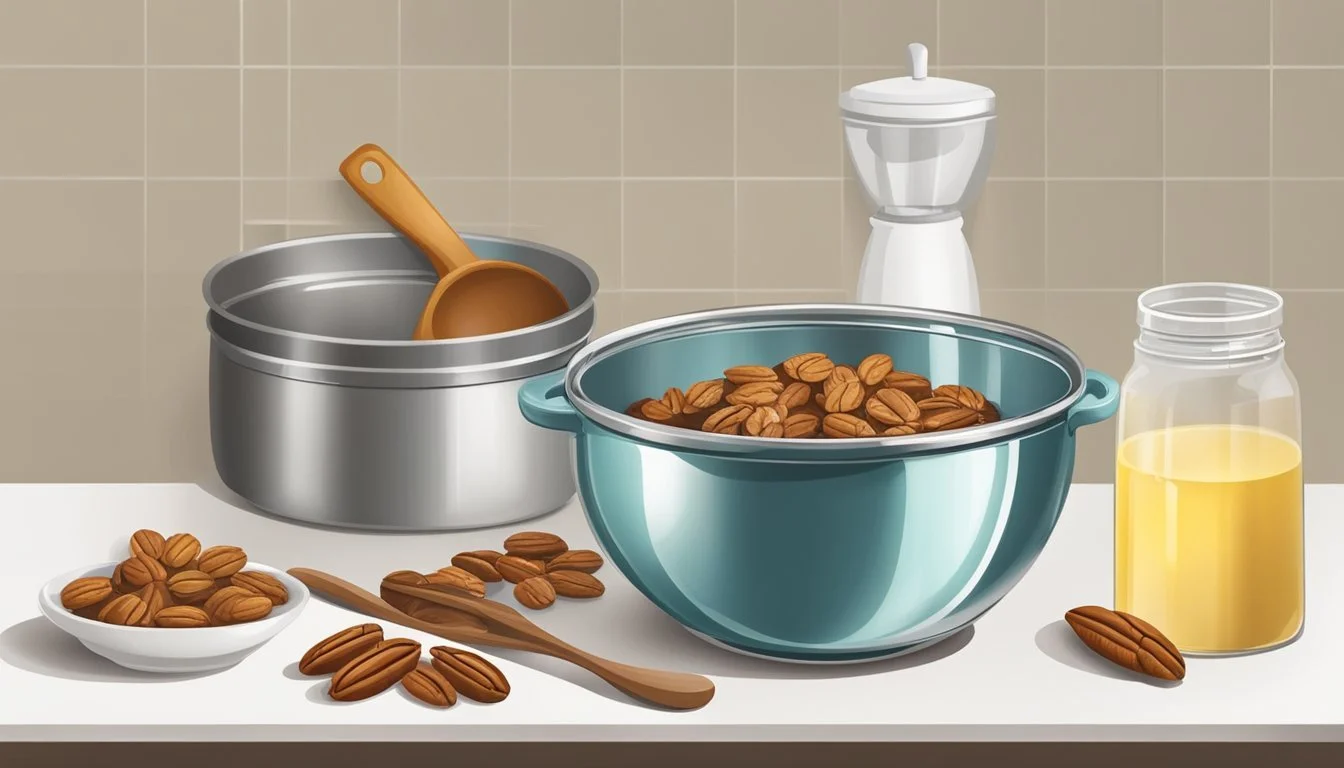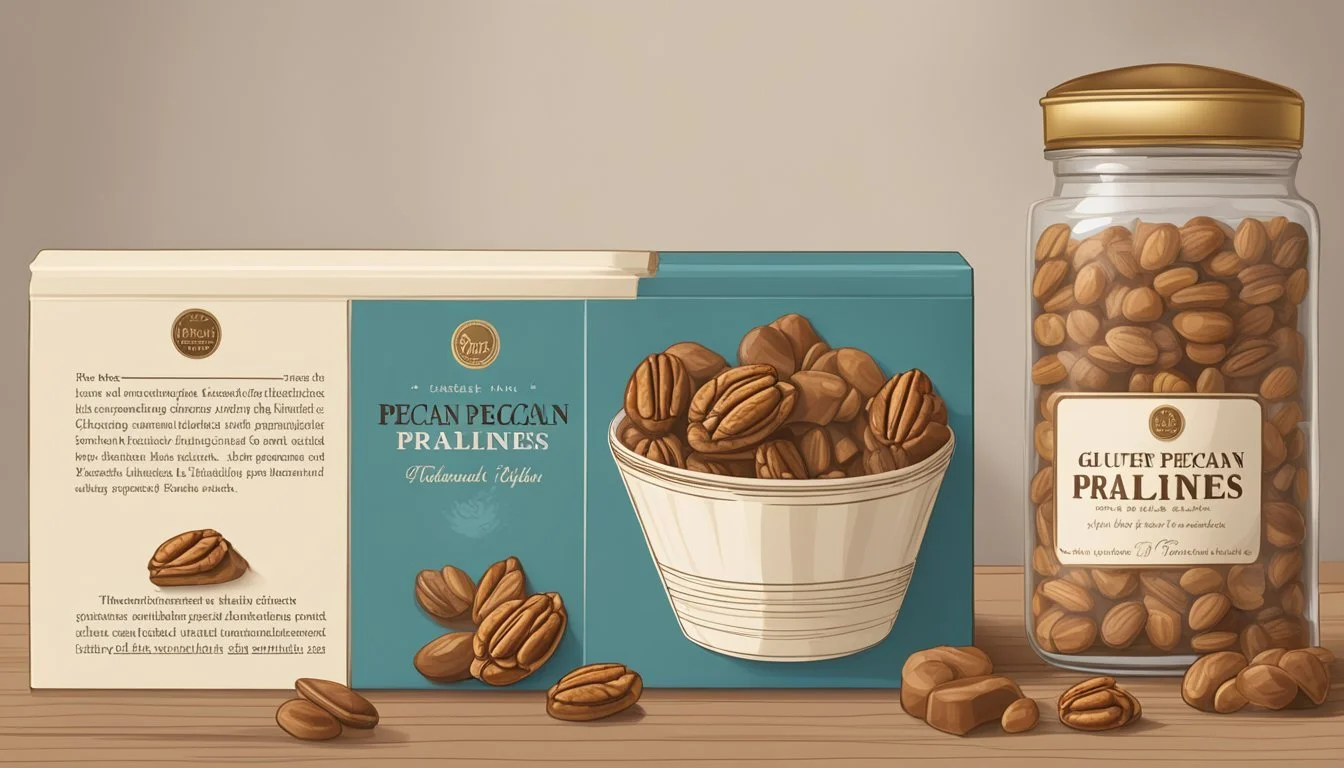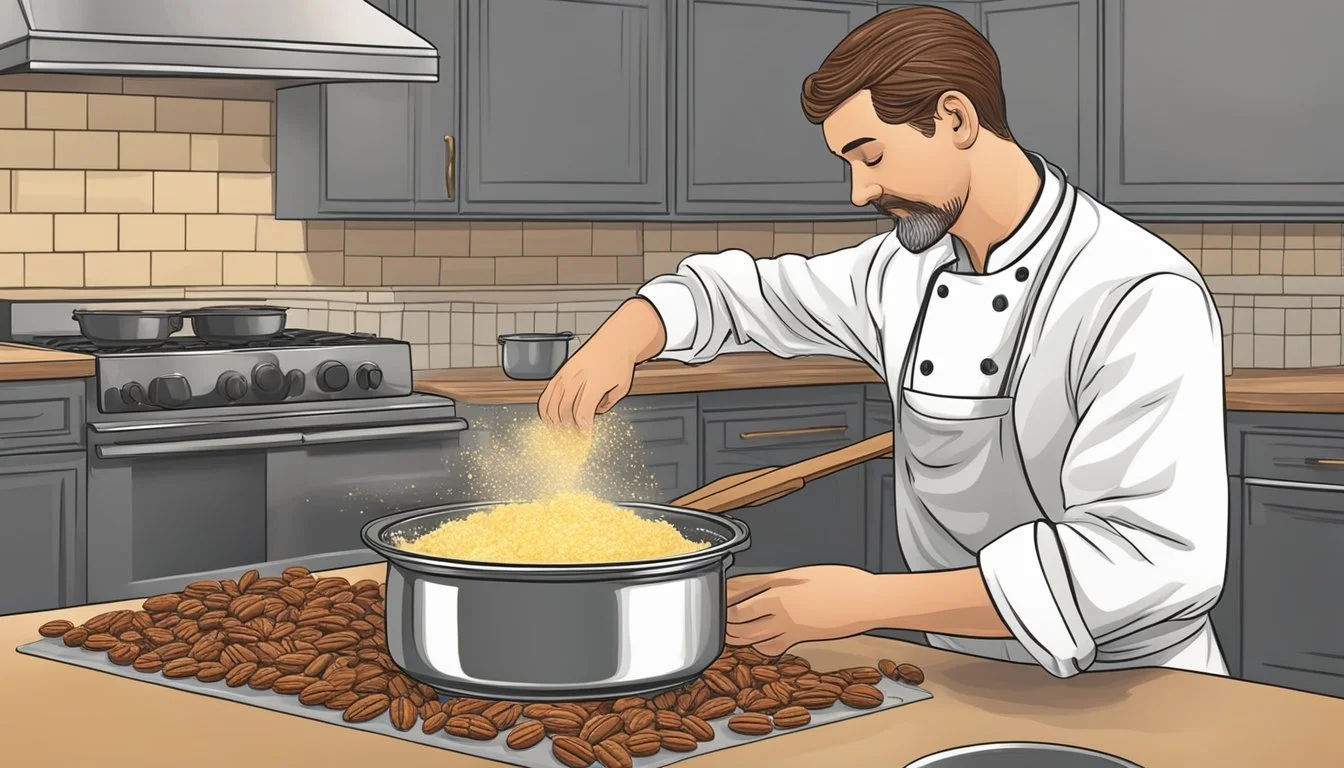Is Pecan Praline Gluten-Free?
Unveiling the Truth About This Sweet Treat
Pecan pralines are a sweet confection rooted in Southern culinary tradition, known for their rich flavor profile and creamy, sugary coating. As a treat, they effortlessly blend the crunch of pecan nuts with the smoothness of a candy mixture usually made with butter, sugar, and cream. For those with dietary restrictions, identifying gluten-free options is essential to enjoy these delights without health concerns. A key point to consider is that pecans themselves are naturally gluten-free, suggesting that, in their purest form, praline pecans could be suitable for a gluten-free diet.
However, the gluten-free status of pecan pralines largely depends on the specific recipe and preparation method used. Traditional pralines might include ingredients or additives that contain gluten, thereby rendering them incompatible with a gluten-free diet. Individuals with gluten intolerance or celiac disease must be diligent about examining the ingredients list of commercial pralines or the recipes used in homemade batches. For those looking to enjoy pralines without the gluten, ample recipes exist that substitute traditional wheat-containing ingredients with gluten-free alternatives, ensuring that the final product is safe to consume for those avoiding gluten.
It is important for consumers to be aware that cross-contamination can occur during the production process if gluten-free pralines are made in facilities that also process wheat or other gluten-containing products. While the primary components of praline pecans may be gluten-free, vigilance is advised when purchasing or making this confection to ensure it aligns with dietary requirements. With growing attention to gluten-free diets, many producers and recipe creators are now offering praline variations that cater specifically to the gluten-free audience, making it easier to indulge in this classic Southern treat without the gluten.
Understanding Gluten
Gluten is a group of proteins found primarily in wheat, barley, and rye. It acts as a binder, holding food together and giving it a stretchy quality that is often appreciated in doughs and pastas. Gluten's elastic nature is what gives bread its chewy texture and allows it to rise when baked.
For a significant portion of the population, gluten can be consumed without any adverse effects. However, for individuals with certain health conditions, such as celiac disease or non-celiac gluten sensitivity, the ingestion of gluten can cause a range of symptoms. These may include gastrointestinal distress, nutrient malabsorption, and in some cases, severe allergic reactions.
Gluten-Free Defined
A gluten-free diet excludes all forms of gluten. Foods that are naturally gluten-free include:
Most dairy products
Fruits and vegetables
Meats and fish (excluding breaded or marinated versions)
Rice, corn, and quinoa
While a gluten-free diet is medically necessary for some, others may choose to follow it for different health reasons. Foods labeled as gluten-free must meet regulatory standards which typically require that foods contain less than 20 parts per million (ppm) of gluten.
It is important for consumers following a gluten-free diet to read ingredient labels carefully. Foods that are naturally gluten-free can become cross-contaminated with gluten-containing grains during processing and manufacturing. Additionally, many products may use gluten-containing ingredients in their recipes or as additives.
In summary, understanding gluten and what it means for a product to be gluten-free is essential for people who have celiac disease, gluten sensitivity, or those who simply wish to avoid gluten for other dietary reasons.
Pecan Praline Ingredients
Pecan pralines are a sweet confection primarily composed of nuts and sugar-based syrup. Specific ingredients used can often determine whether the pralines are gluten-free.
Primary Components
The foundation of pecan praline recipes includes pecans, a sugar mixture, and typically some type of cream and butter. These ingredients are cooked to create a candy coating. To ensure gluten-free pralines, one must confirm that each individual ingredient is free of gluten contaminants.
Pecans: Often whole or halved, form the nutty base.
Sugar: Can be white, brown, or powdered to sweeten the mixture.
Cream: Adds richness; varieties like heavy cream are common.
Butter: Used for flavor and to soften the texture of the candy.
Salt: Just a pinch to balance the sweetness.
Vanilla: Often a dash for added flavor complexity.
Nut Varieties and Alternatives
While pecans are traditional in pralines, other nuts can be substituted. These alternatives could include almonds, walnuts, hazelnuts, or other gluten-free nuts. Each nut imparts its own unique flavor and texture to the praline.
Sugar Variations
Sugar in pralines can come in several forms, including white granulated sugar, brown sugar, light brown sugar, and powdered sugar. Brown sugars contribute to a deeper flavor due to the presence of molasses. For a differing sweetness profile or consistency, recipes may call for specific sugar types.
Pecan Pralines Preparation
Creating perfect pecan pralines involves precision in cooking techniques, careful rolling and shaping, and understanding the factors that affect praline texture. Each step of the process contributes to making a delectable, gluten-free candy.
Cooking Techniques
Pecan pralines begin on the stovetop, a process that demands constant attention. Cooks need to dissolve sugar in a saucepan with butter and cream, if the recipe calls for it, over medium-high heat. This mixture must be stirred consistently until it reaches what is known as the soft ball stage, approximately 235°F to 240°F, as indicated by a candy thermometer. Accurate temperature control at this stage is critical for proper consistency and texture.
Rolling and Shaping
Once the candy mixture is adequately cooked, it is then dropped by spoons onto a baking sheet lined with parchment paper. This step must be done swiftly to prevent the mixture from hardening before it is properly shaped. The heat from the mixture allows the pecans to be coated and then rolled into individual pralines, creating individual pieces of pecan candy.
Praline Texture Factors
The final texture of pecan pralines hinges on a few key factors: the duration of stirring after heat is removed, and the temperature at which they cool. Stirring the mixture until it becomes creamy and cloudy is essential for achieving the hallmark creamy texture that characterizes good pralines. Allow the pralines to cool at room temperature on parchment paper can help ensure this texture is achieved.
Ensuring a Gluten-Free Dessert
When making pecan pralines as a gluten-free treat, one must carefully select ingredients and be mindful of cross-contamination to ensure the dessert remains safe for individuals with gluten sensitivities.
Choosing Gluten-Free Ingredients
Pecans: Naturally gluten-free, pecans are the heart of pecan pralines. They do not contain gluten.
Sweeteners: Use pure granulated sugar, brown sugar, or a gluten-free substitute like Swerve to avoid gluten.
Butter Alternatives: For a vegan option, select unsalted dairy-free butter which should also be gluten-free.
Flavorings: Vanilla extract is typically gluten-free, but always check the label for confirmation.
Selecting ingredients with certified gluten-free labels drastically reduces the risk of unknowingly introducing gluten into the dessert.
Cross-Contamination Risks
Utensils and Cookware: Use separate utensils, bowls, and saucepans exclusively for gluten-free cooking.
Preparation Surface: Line baking sheets with parchment paper and ensure surfaces have been thoroughly cleaned to avoid contact with gluten residues.
Processing: Be aware that products such as pre-chopped nuts could be processed in facilities that handle gluten-containing items.
By rigorously managing these risks, one can confidently prepare gluten-free pecan pralines.
Variations of Pecan Praline Treats
Pecan pralines can vary greatly in recipes and ingredients, reflecting regional traditions and dietary preferences. These variations breathe new life into the classic melt-in-your-mouth treat, with unique takes from different areas and plant-based options that cater to a variety of diets.
Regional Recipes
American Praline: In the United States, particularly in the South, pecan pralines are a sugary confection known for their rich, buttery flavor. The Louisiana variety, especially those from New Orleans, stand out for their cream-based recipe, which results in a softer, creamier texture. Often referred to as a Creole or Southern Pecan Praline, this sweet treat is a staple in regional cuisine.
Texas Pecan Pralines: Texas pralines tend to have a slightly firmer texture and are commonly made with whole pecans.
French vs. American Styles: While the classic American praline utilizes pecans and cream, it's worth noting that it originated from French pralines, which were almonds encased in caramelized sugar, evolving significantly in the transition to American kitchens.
Vegan and Plant-Based Alternatives
Vegan Pecan Pralines: For those following a vegan or plant-based diet, traditional pecan pralines have been adapted to use animal-free ingredients. Replacing dairy butter with unsalted plant-based butter and heavy cream with dairy-free alternatives like almond or coconut cream, vegan pecan pralines maintain the delightful texture and flavor that praline lovers seek.
Sweeteners: While the classic praline recipe calls for brown sugar and confectioners sugar, some vegan recipes may use alternative sweeteners to avoid processed sugars.
Availability: These vegan and plant-based versions are becoming more popular and are available at specialized bakeries as well as being simple to make at home with the right ingredients.
Storage and Preservation
Proper storage is crucial for maintaining the quality and freshness of pecan pralines. Whether one opts for short-term enjoyment or long-term indulgence, understanding the best methods to preserve these treats is key.
Short-Term Storage
For short-term storage, one should keep pecan pralines in an airtight container at room temperature. This limits exposure to moisture and other contaminants, ensuring the pralines remain crisp and delicious. Typically, this method will keep pralines fresh for up to two weeks.
Room Temperature: Ideal for up to 2 weeks
Container: Must be airtight
Long-Term Storage
In the case of long-term storage, pecan pralines can be kept in the freezer for several months. Individual pralines should be wrapped tightly in plastic wrap or aluminum foil, then placed in an airtight container or freezer bag to prevent freezer burn and flavor transfer.
Fridge: Not recommended, as the moisture can affect texture
Freezer:
Wrap: Individual pralines in plastic wrap or aluminum foil
Container: Secure in an airtight container or freezer bag
Duration: Can be stored for several months
Nutritional Facts
Pecan pralines are confections primarily made up of pecans, which are a type of tree nut, and a sugary coating that typically consists of sugar, butter, and milk or cream. Different recipes might include variations or additional ingredients, but the primary components focus on pecans and a caramelized sugar mixture.
Regarding the nutritional content, pecan pralines are rich in essential nutrients provided by their main ingredient, pecans. Pecans offer a good source of protein and fiber, and also contain healthy fats. However, the sugar coating significantly increases the carbohydrate content. The following table presents an approximate nutritional breakdown of a standard praline, but these values can vary depending on the specific recipe and serving size:
Nutrient Amount (Per Serving) Calories Varies Carbohydrates High Protein Moderate Fiber Moderate Fat High
It is important to note that while pecans are naturally gluten-free, pralines may not be if they are made with additives or processed in facilities that also handle gluten-containing ingredients. Consequently, individuals with gluten intolerance or celiac disease should be cautious and ensure that any pralines they consume are certified gluten-free.
In a dietary context, pecan pralines should be considered an indulgent treat due to their high sugar and fat content. They are generally low in fiber despite the presence of pecans. Consumers looking to enjoy pecan pralines while managing their nutritional intake should be mindful of serving sizes.
Serving Suggestions
Pecan praline's versatility shines as both a standalone treat and a delightful complement to various desserts and snacks. Its rich, sweet flavor pairs well with many accompaniments and can be presented in an array of enticing ways.
Pairings and Accompaniments
Pecan pralines can be enjoyed in their traditional candy form or as a garnish to elevate the flavor and texture of numerous desserts. Dessert enthusiasts often crumble them over ice cream to add a crunchy, caramelized nuttiness. For a warm, comforting pairing, they can serve pecan pralines alongside a cup of coffee or tea, where the beverage's bitterness balances the praline's sweetness. In snack scenarios, candied pecans, another variation, may serve as a lighter option.
Presentation Tips
When it comes to presentation, pecan pralines command attention with minimal effort. For a simple yet elegant display, arrange them on a dessert platter as a standalone treat or alongside an assortment of fine cheeses and fruits. To use them as a topping or coating for other desserts, such as cheesecakes or mousse, sprinkle crushed pralines atop just before serving to maintain their crispness. The contrast of textures between the creamy dessert base and the crunchy pecans significantly enhances the eating experience.
Making Pecan Praline at Home
Pecan praline is a sweet confection known for its rich, buttery flavor and satisfying crunch. It's often considered easy to make, and home chefs can bring this Southern classic to life with a few simple steps.
Ingredients:
1 cup unsalted butter
2 cups granulated sugar
1 cup heavy whipping cream or heavy cream
1 cup light corn syrup
2 cups pecan halves, raw or toasted
Instructions:
1. Preparing Pecans:
If one prefers toasted pecans for a deeper, nuttier flavor, they should first spread the pecans on a baking sheet and toast in a preheated oven at 350°F for 5-10 minutes, watching carefully to prevent burning. Set the toasted pecans aside to cool.
2. Setting Up:
Before starting the cooking process, line a large baking sheet with parchment paper to prevent sticking. Prepare all ingredients since the process can go quickly once started.
3. Combining Ingredients:
In a heavy-bottomed saucepan, melt the unsalted butter over medium-high heat. Add the granulated sugar, heavy cream, and light corn syrup to the pan, stirring to combine. These ingredients create the syrup base.
4. Cooking Process:
Cook the mixture, stirring occasionally, until it reaches the soft ball stage (235°F - 240°F). This will take approximately 15-20 minutes. It's crucial to use a candy thermometer to monitor the temperature.
5. Finishing the Praline:
Once the desired temperature is reached, remove the saucepan from the heat. Stir in the vanilla extract and the pecan halves until the mixture thickens, usually for about 2-3 minutes.
6. Forming the Pralines:
Quickly spoon heaping tablespoons of the mixture onto the prepared baking sheet. Ensure to space them out to prevent the pralines from sticking together. Allow the pralines to cool completely.
The pralines can be stored in an airtight container once they are completely set and cooled. With straightforward ingredients and proper equipment, one can create delectable, gluten-free pecan pralines from the comfort of their kitchen.
Fun Facts and History of Pecan Pralines
Pecan pralines trace their delicious legacy back to 17th Century France, named after César duc de Choiseul, comte du Plessis-Praslin. While the precise originator remains shrouded in mystery, much credit is given to Plessis-Praslin's chef, Clement Lassagne. Transplanted to the soils of American culture, the pecan praline has become a beloved confection, particularly delightful during the holiday season.
Notable Aspects of Pecan Pralines:
The classic Southern charm has led to pecan pralines being a quintessential sweet tooth indulgence during festive gatherings.
Mouthwatering and rich, these confections highlight the versatility of pecans, whether fresh or as dried pecan nuts.
Pecan pralines often stir a sense of nostalgia, as many connoisseurs associate them with family traditions and warm, joyous occasions.
Making Pecan Pralines:
Pecan pralines are traditionally made from pecans encased in a sugar candy mixture.
The process generally involves cooking sugar to a soft ball stage before incorporating fresh pecans into the mix.
Once set, the result is a balance between the crunch of pecans and the creamy, crystalline candy.
Despite the evolution of recipes and variations, the essential components of pecan pralines have largely remained true to the original. Pecan pie, another seasonal favorite, shares similar inspiration with its use of pecans as a central ingredient. Lovers of pecan pralines look forward to the holiday treats, often seeking out the freshest pecans to create their homemade confections. Each bite offers a connection to a long-standing culinary tradition, delighting palates across generations.
Culinary Techniques and Considerations
When creating pecan pralines with the goal of being gluten-free, the selection of ingredients and culinary techniques are essential. One begins with toasted pecans, which not only impart a rich, nutty flavor, but also ensure a crunch within the creamy texture of the final product. Once toasted, the pecans should be laid out on wax paper or a silicone baking mat, preparing them for the praline mixture.
Utilizing a large saucepan, chefs combine ingredients such as light corn syrup, which contributes to the pralines' glossy sheen and chewy texture, with other components like sugar, and cream. Baking soda is sometimes added to introduce air, enhancing the confection's light, airy quality.
Cooking Process:
Combine syrup and sugars over medium-high heat until dissolved.
Stir continuously to prevent scorching, ensuring a smooth mixture.
Cook to the soft-ball stage, until a candy thermometer reads the specified temperature.
Just before reaching the desired temperature, flaky sea salt can be introduced for a balance of flavors. Chefs must work swiftly, stirring the mixture until it becomes creamy, a sign to quickly spoon the batch onto the prepared surface.
Final Steps:
Spoon mixture onto the set-aside pecans on wax paper.
Sprinkle with additional sea salt, if desired.
Allow to set until firm.
Attention to detail, precise measurements, and timing are crucial in achieving the distinctive texture and flavor of pralines. Moreover, for those with gluten sensitivities, ensuring that each ingredient, like corn syrup or baking aids, is free of gluten contaminants is paramount. This meticulous approach guarantees a delicious gluten-free indulgence.
Common Questions and Concerns
When exploring whether pecan pralines are gluten-free, several questions often arise. Consumers dealing with gluten-related allergies seek clarity on ingredients and processing. Pecan pralines inherently do not contain gluten, as the primary composition is pecans and sugar.
Are pecan pralines safe for individuals with gluten sensitivities? Generally, pecan pralines are gluten-free because they do not contain wheat, barley, or rye. However, one must exercise caution and verify the ingredients, as some manufacturers might use additives that contain gluten.
What about the texture of gluten-free pecan pralines? The absence of gluten does not significantly affect the texture. Pecan pralines maintain their characteristic crunchy exterior and creamy interior, which comes from the caramelized sugar coating the pecans.
Do pecan pralines cater to those with a sweet tooth? Yes, pecan pralines are a perfect treat for those who enjoy a balance of sweet and salty flavors. The natural sweetness of the sugar complements the pecans' subtle saltiness and buttery texture.
Concerns regarding sugar content in pecan pralines:
While pecan pralines are a sweet treat, individuals monitoring sugar intake should consume them in moderation.
Tips for ensuring pecan pralines are gluten-free:
Always read labels for potential gluten-containing additives.
Opt for homemade pralines, where one can control the ingredients.
In summary, pecan pralines can be a suitable dessert for those requiring a gluten-free diet, provided they verify the ingredients and processing methods to exclude gluten contamination.












